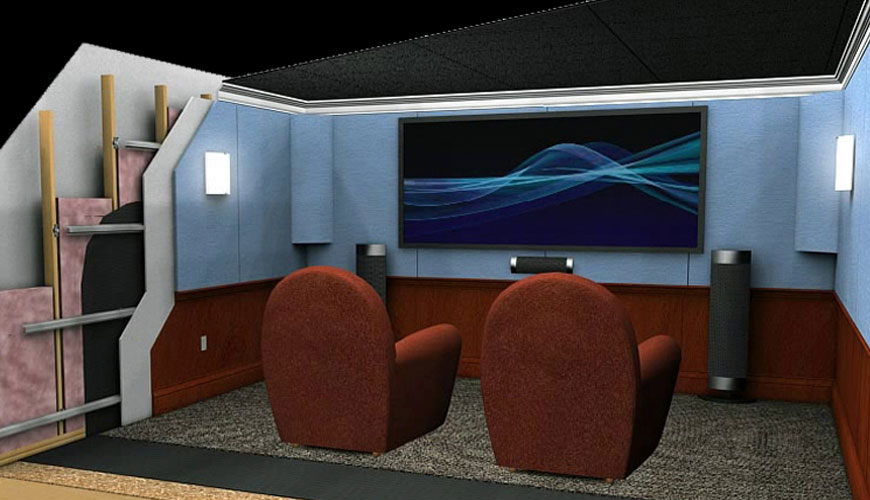

EUROLAB, with its state-of-the-art accredited laboratories and expert team, provides precise and fast testing services within the scope of EN ISO 15186-2 testing. This standard specifies a sound intensity method for determining the in situ sound insulation of walls, floors, doors, windows and small building elements.

It is designed for measurements that must be made in the presence of side conduction. It can be used to provide sound power data for diagnostic analysis of lateral transmission or to measure side sound insulation parameters.
This part of ISO 15186 may be used by laboratories that do not meet the requirements of ISO 15186-1 dealing with laboratory measurements with little or no side transmission. ISO 15186-3 deals with measurements made at low frequencies under laboratory conditions.
This section of ISO 15186 also describes the effect of side transmission on measurements made using the specified method and how density measurements can be used.
This method gives values for airborne sound insulation based on frequency. They can be converted to a single number characterizing acoustic performance by applying ISO 717-1.
If sound reduction measures made using this method are to be compared to those made using the traditional echo chamber method in various parts of ISO 140, it will be necessary to add an adaptation term that reflects the divergence between test methods.
In this part of SO 15186, quantities representing the mean over the measuring surface are clearly defined using a bar above the measured quantity. For example, mml_m1 is the average normal density over the measuring surface, while the quantity without the bar, In, is the normal density obtained at a single point on the measuring surface. This clear definition of surface average quantities is intended to help the user quickly define surface average quantities and keep the terminology consistent with the ISO 9614 series.
This index R' I is fundamentally different from the apparent noise reduction index R of ISO 140-4, where the total sound power from all receiving sources is measured. The definition of the apparent intensity sound reduction index allows the directivity of the density probe to be used to selectively measure the sound power from each receiving room surface as desired.
At low frequencies measured by conventional methods ( ISO 15186-140 , ISO 3-140 and ISO 4-140 ) with the sound reduction index determined by the sound intensity method [ ISO 10 (all parts) ]. If density results are to be compared with results measured using the conventional method, the density results should be adjusted by giving the modified apparent density sound reduction index.
EUROLAB assists manufacturers with EN ISO 15186-2 test compliance. Our test experts, with their professional working mission and principles, provide you, our manufacturers and suppliers, the best service and controlled testing process in our laboratories. Thanks to these services, businesses receive more effective, high-performance and quality testing services and provide safe, fast and uninterrupted service to their customers.
To get an appointment, to get more detailed information or to request an evaluation, you can ask us to fill in our form and reach you.